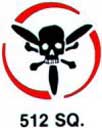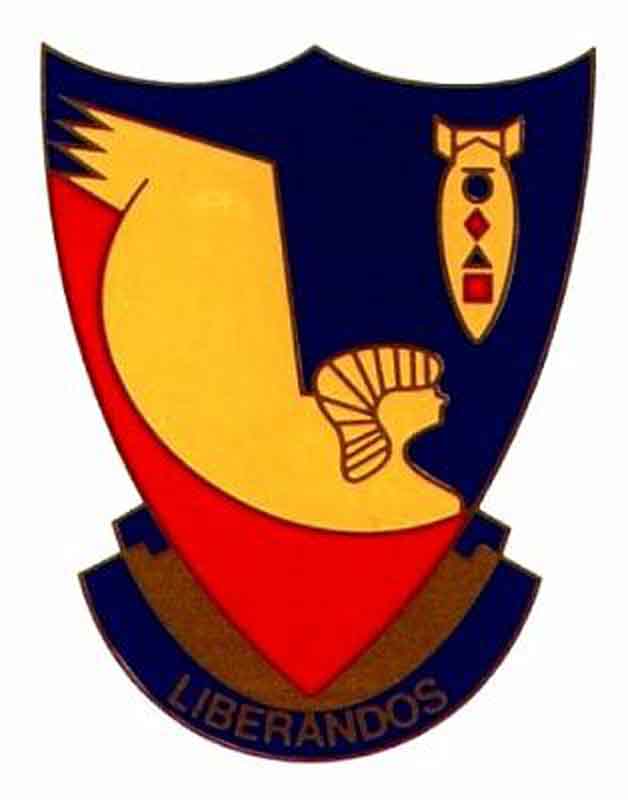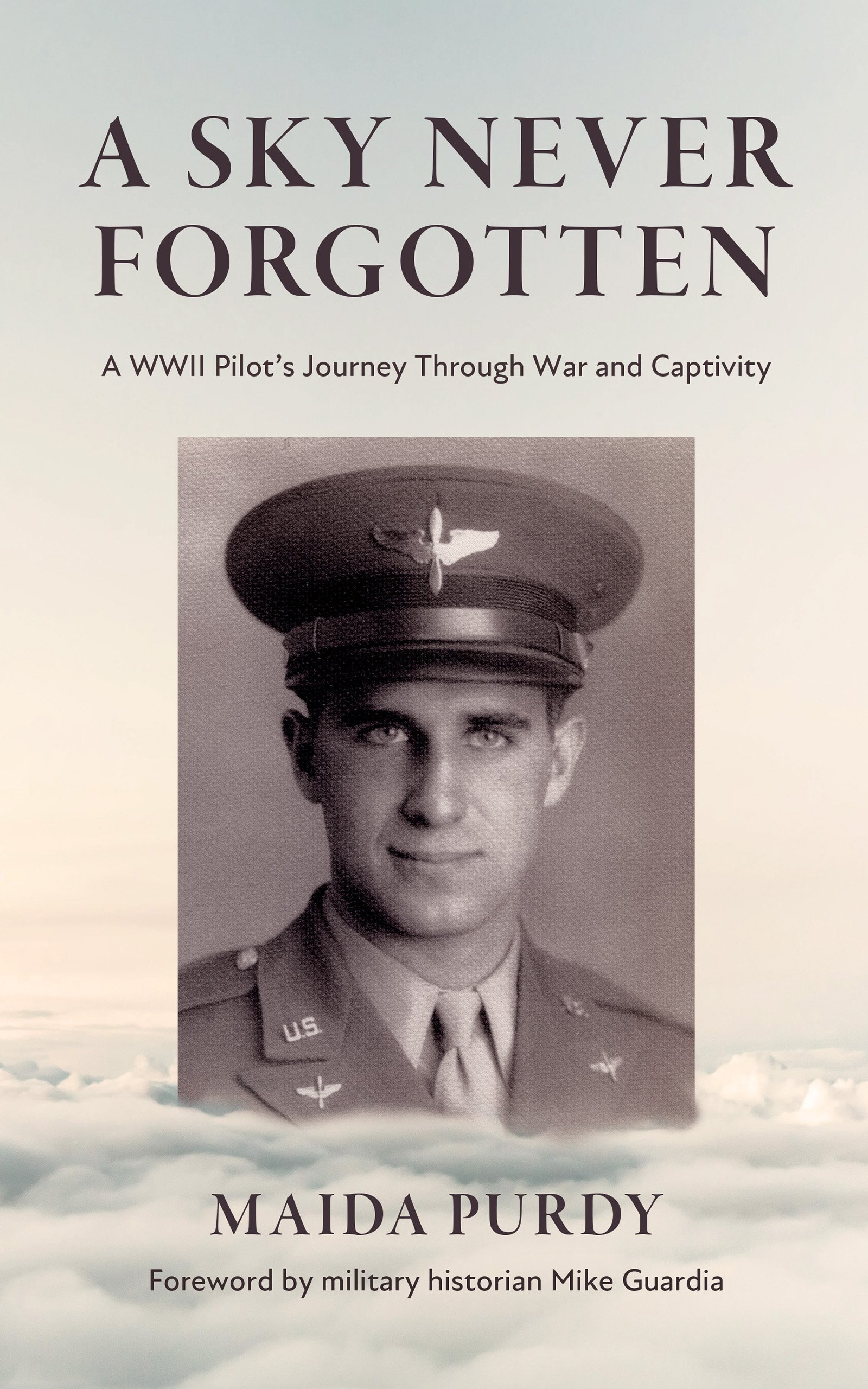Dave Burton mission March 30, 1944
BOMBED BY OUR OWN PLANES
"(#!*!@*!!)! They're dropping their bombs on us!" Co-pilot Lt. Milt Shuman of Sterling, Illinois yelled through his oxygen mask.
The morning had started out the same as other mornings when we were scheduled to fly combat missions from San Pancrazio, Italy. It usually entailed a 4:00 A.M. wake-up call; a breakfast of scalding bitter coffee and powdered eggs made into rubber.
The briefing for our mission included pictures of the target, our flight path shown on a map and a pep talk from the Group Commander Colonel Theodore Graff.
It was March 30,1944 and we were flying in formation on a mission to bomb the marshalling yards of Sofia, Bulgaria. Hundreds of vapor trails led by a speck of silver revealed the number of bombers committed to this mission to prevent oil shipments from reaching Germany. The Germans were just as determined to protect those oil shipments and sent up formation after formation of fighters to intercept us. Our Allied fighter escort left us two hours before when they reached their fuel limit and the enemy ME 109's and FW 190's moved in to take their toll on the slow flying bombers. Significant openings began to appear in our formations as one plane after another was attacked and caught fire or lost an engine and had to drop out of formation and lose the mutual protection of the gunners on other bombers.
As a final act, before antiaircraft gunners on the ground took over, echelons of 6 to 20 enemy fighters charged head-on through our formations, firing at every bomber that came into their gun sights. By doing this, enemy fighters hoped to chase a nervous pilot out of formation or cripple a bomber so they could finish it off later. Everyone in our Group held in tight formation. It wasn't long before black clouds of flak were bursting all around us as the antiaircraft shells sought us out in the rarified atmosphere of minus 48°C.
As leader of a flight of six bombers, part of the 512th Squadron, 376th Bomb Group, 15th Air Force, it was my responsibility to keep my flight as close as possible to the lead flight of the Squadron and drop our bombs when the lead plane released theirs.
As we turned on the IP (Initial Point and the start of the bomb run), tailgunner Sgt. Bob Mellinger of Youngstown, Ohio called on the intercom, "Hey Skipper! Tailgunner here. There's another formation ofB-24's about 1,000 feet above us. Oh Shit! They all just opened their bomb-bay doors!"
I glanced up through the Plexiglas overhead and saw a Group of B-24's that had taken a shortcut across the IP, and were heading for the same assigned target.
I called back on the intercom, "Pilot to tail. They are bound to see us and pull away. Keep an eye on them and let me know what they are doing. We have about eight minutes to the target."
In the meantime, I switched to the assigned command radio frequency and broke radio silence with, "Red Leader! Red Leader! This is B Flight Leader. We have a formation ofB-24's directly over us with Bomb-bay doors open and following our bomb run! Let's turn and get the hell out of their way! Over."
There was static and no response from the leader.
I urgently repeated, "Red Leader! Red Leader! Planes above us with Bomb-bay doors open! In 3 minutes they'll bomb the hell out of us! Over."
Still no response.
We stayed in formation, believing that the men above us would surely see us and hold their bombs.
Co-pilot Shuman yelled; "(#!@%&*)! They're dropping their bombs on us!
I glanced up.
Ten 500-pound high explosive bombs were dropping right in front of us. To the right and left, there were two more strings of ten 500-pound bombs. When they reached about 500 feet above us, we could see the yellow tags of the arming devices fly off indicating the bombs were fully armed and would explode at the slightest touch. I had about 2 112 seconds to decide before we would collide with them.
With more of a reflex action than a decision, I kicked the right rudder all the way and pushed forward and right on the control wheel. The great bulky four-engine bomber responded immediately and it rolled right into a vertical dive heading for the ground 22,000 feet below.
Co-pilot Shuman grabbed for the control wheel, thinking shrapnel had hit me from the flak but I waved him off.
Back in flight training school at EI Paso, Texas, just for fun, I would put the B-24 into aerobatics maneuvers such as stalls, vertical reverse, snap rolls and dives. This time, it was not for fun. I knew some planes could go into a vertical dive and recover but I didn't know how this particular plane would respond because it was heavily loaded with armament and bombs. On a previous combat mission I had seen another B-24 drop out of formation, go into a steep dive and break up before anyone could bailout ..
As our B-24 headed straight for the mountains below, I could actually see the bombs floating down beside us less than 200 feet away. The plane gradually pulled away from the danger of hitting the bombs and my attention was turned to saving the crew. I knew we were in danger of losing our wings and tail as the airspeed indicator spun past the red line indicating the highest speed the plane could safely be flown.
I punched the bailout button!
With the bailout bell ringing in their ears, the crewmembers tried to leave the potentially doomed plane. The centrifugal force of the plane's violent maneuver held their bodies where they were and they couldn't move. Sgt. Herb Graham, of Fairfield, California in the top turret, AI Kurzonkowski, from Holliston, Massachusetts in the ball turret and Sgt. Bill Furney, Massillon, Ohio in the nose turret could not lift themselves from their tight quarters. Tailgunner Sgt. Bob Mellinger managed to fall backwards out of his tail turret only because he never closed its door. Our Flight Engineer, Sgt. Ed Steiner of Eden So. Dakota, was in the open bomb bay, standing on a six inch catwalk between the bomb racks, ready to take pictures of the bomb hits on the target. When the plane rolled he was pressed between the bomb racks and couldn't move. His parachute was 10 feet away on the flight deck.
Bombardier Lt. Dan Delaney of Philadelphia was looking through his bombsight and when the plane rolled, he saw nothing but blue sky through his scope. He threw the salvo toggle switch, releasing the ten high explosive bombs but they rolled around inside the Bomb bay before dropping out.
Navigator Lt. Hugh Banta, of New York was at his cramped desk in the nose compartment and when the plane flipped, he pulled the emergency nose wheel door opener and clipped on his chest chute.
Sgt. John Knoll of Chicago, Illinois was standing at the 50 caliber machine-guns in the waist window. When he tried to lean over and pick up his chest chute, he was pinned to the floor and couldn't move because of the centrifugal force.
The plane continued to pick up speed in the dive and was vibrating badly as the wind whistled and roared past the rivets and corners of the plane's fuselage. The aluminum skin on the upper surface of the wing rippled like water on a lake. I had to be extremely careful because any sudden pressure on the control column might create enough extra stress that the wings and tail surfaces could be ripped from the fuselage. I cut the throttles and with my right hand started slowly turning the elevator trim tab, trying to gently bring the plane out of the dive.
The plane began to respond to the controls. I had the feeling we were going to make it and I shut off the bailout button and yelled on the intercom, "Pilot to crew! Don't bailout! Don't bailout! I think I've got it! It's coming out! We're going to make it! Hot damn!"
"Pilot to co-pilot, get a report on the condition of the crew members and the plane. We may have lost some of them back there!"
I looked over at Shuman and I could see he had his seat belt unfastened but he hadn't moved from his seat. He started his rollcall.
"Co-pilot to Tail, report in. Over."
For a few seconds there was no answer, then John Knol came on the intercom.
"Waist to co-pilot. Tail just about made it out the camera hatch but I grabbed him. He's OK and so is everything here. Damn! What a ride that was! Anybody got a drink?
"Co-pilot to nose. Anybody up there?
"Yeah, Bombardier here. But Banta and I would have been long gone if we hadn't tried to get Furney out the nose turret."
Everyone of the crew had been trying to get to an escape hatch but not one of the crew bailed out. It certainly wasn't because they didn't try.
As the plane raced for the earth, I selected a valley in the mountains in order to take as long as possible before attaining level flight. We still had about four hours of flying over enemy territory to go so we stayed low to the ground to avoid radar and keep hidden from the enemy fighters attacking the rest of our formations 20,000 feet above us.
When we had everyone in the crew settled down and they were at their combat stations, I called on the command radio, "This is leader of "B" Flight, I don't know where the rest of you guys are, but I'm down here in a valley and I'm heading for home! Did you see that? Those sons-of-bitches really did bomb us!"
I didn't expect a reply but a voice came in loud and clear on the radio. "Yeah, we know! We're right behind you! Wait up for us!"
It was Lt. Bob Hunter of Jefferson City, Missouri, who had been flying formation on my right wing. When I rolled to the right, he had to do the same and a string of bombs came between us, just missing both planes by a few feet. He did a nice job of flying to avoid a mid-air collision.
This was Lt. Hunter's first mission and after we were back at the base he lamented, "Hell, combat is going to be far worse than I thought. Not only do the Jerrys shoot at us but our own damn planes bomb us". He told me why he and four other planes followed me down. It was because they had been told to follow the leader of the formation. "No matter what!"
We told our story to the debriefing officer in excited voices, each crew member giving his version of what happened and what each did to try to bailout. The officer explained how the 98th Bomb Group missed the IP and cut across above us. He couldn't explain how none of the more than 400 pairs of eyes in the other Group could miss seeing us below them. He also agreed it had to be a "miracle" that none of the planes in our formation were hit by the nearly 600 bombs the higher group dropped on us. It was our 17th mission and our 17th "miracle".
POST SCRIPT;
At a reunion 40 years later, Tail Gunner Bob Mellinger expressed his feelings about his pilot Dave Burton when he said, "The Army Air Corps taught many men to fly airplanes during the war. The majority of pilots were mediocre and they flew by the numbers, just as they were taught. True, they got the job done but when the chips were really down, many of them could not cope with the situation at hand and they are not here today.
"Now it has been said that there are pilots and there are aviators. I truly feel Dave Burton is an aviator and not just a pilot. I know March 30, 1944 over Sofia, Bulgaria, would have been our last day if any other pilot had been in that left seat. Dave acted instinctively and did all the right things that day so we could fly again. That was just one of the many combat situations that puts Dave Burton in the aviator category. "There is an old saying flyers have quoted since the war, 'Thank God for Pratt and Whitney' and now I would like to add my own to that, 'Thank God for Pratt and Whitney and David C. Burton, Aviator."


The website 376bg.org is NOT our site nor is it our endowment fund.
At the 2017 reunion, the board approved the donation of our archives to the Briscoe Center for American History, located on the University of Texas - Austin campus.
Also, the board approved a $5,000 donation to add to Ed Clendenin's $20,000 donation in the memory of his father. Together, these funds begin an endowment for the preservation of the 376 archives.
Donate directly to the 376 Endowment
To read about other endowment donation options, click here.
Reunion
NOTE change in the schedule !!
DATES: Sep 25-28, 2025
CITY:Rapid City, SD
HOTEL: Best Western Ramkota Conference Hotel; 2111 North LaCrosse St., Rapid City, SD 57702; 605-343-8500
Click here to read about the reunion details.




















